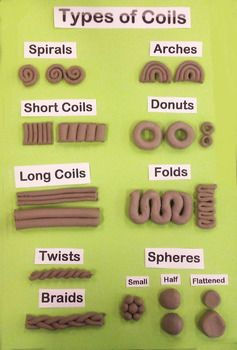Environmental Art & Yarn Bombing
- TheArtofMrsCastaldi

- Mar 8, 2019
- 4 min read

The founder of “yarn bombing”, Magda Sayeg is known for colorful knit and crochet works which help transform urban space and landscapes, from the rawness of metal to the soft, warm, and fuzzy feeling of yarn. Her work animates the dreary and the stoic, and transforms the monochrome into knitted color “bombs”. Her pieces are well-tailored to the object for which they were designated and still provide the viewer the ability to fully function the object to the fullest. Sayeg’s “yarn bombing” is a temporary piece that allows for beautification until Mother Nature acts upon the art or the artwork is elected to be taken down. Magda Sayeg created a body of work that may range in size, shape, and dimensions, but still has a unified texture and material. Sayeg’s playful outdoor intervention pieces allows for the viewer to see everyday life in a different light, or rather texture, design, and color. Through the interwoven creations, Sayeg is able to paint a colorful picture---replacing the visual and tactile appearance ordinary steel items. Magda Sayeg gives the viewer the opportunity to connect with their own playful side---while still not losing any functionality. Magda Sayeg has an intimate relationship with the work that she is creating---through her love of both the medium of yarn and application of weaving techniques. Sayeg attempts and successfully accomplishes transforming an ordinary, dull urban space into a vivid, artistic, and appealing space. Not only are her targeted items inanimate objects, but rather through weaving, and crocheting, Sayeg is able to give these objects an identity. Magda is able to displace and reinterpret the way that the viewers envision the space. Magda Sayeg’s body of work is fun, colorful, and creative. I love how she is able to take an obsolete item and transform it into a new identity---and yet, keep the same original function. I believe that the playful style is contagious to viewers, encouraging the viewer (myself included) to go directly to the store, and attempt to create crochet or woven artwork to colorize the world. I do wonder how environmental factors play into the management of the pieces and what the lifespan is of the temporary works. Whereas Goldworthy’s art is at least in part characterized by natural elements being broken down into their natural forms, Sayeg’s body of work introduces a burst of albeit artificial material, which itself may be susceptible to the same natural forces that impact Goldworthy’s art.

Andy Goldsworthy is a naturalist artist who is known for creating environmental art. The work he produces ranges from ephemeral to temporary---depending on the medium he chooses to work with. The Goldsworthy aesthetic ranges from creating beautiful outdoor pieces with lily pads, sticks, ice, leaves, rocks bone, boulders, etc. Most of his creations are very much short-lived and classified as ephemeral----transitory in nature. Goldsworthy creates outdoor pieces ranging in size and space. He has created winding paths, spiraling sculptures, interlaced pieces, and cylindrical objects. Andy Goldsworthy created a variety of pieces: some of his pieces are fleeting in nature and only allowing to stop momentarily in time to be documented in a picture. Other works of Goldsworthy, on the other hand, are much more static and more long-term. The pieces that allot for more time, allow for an audience to come bare witness with the work. Alike time, Goldsworthy’s pieces vary in size. However, all of this artist’s works are able to be explored by walking off the beaten path. The audience is able to walk alongside, around, and/or through many of the pieces. Some of the pieces must be explored with haste; while other pieces are able to be explored in a calm meditative state. Goldsworthy attempts to push the limits of nature with his beautiful sculpted pieces---leaving the viewer to be feel nothing less than a state of awe. Goldworthy’s body of art work was meant to be developed, to be cherished, and eventually to decay. His pieces range from ephemeral to temporary in nature----depending on his medium. Goldworthy’s artwork is not about the final product, but rather about the journey from the start to the very end. Goldworthy’s pieces run parallel to the concept of life. We are created, we grow, we decay, and we are eventually gone without a trace. Goldworthy’s body of work is captivating, beautiful, haunting, and fleeting. Although he ranges in size, medium, texture, and design, he is always fully connected and inspired by nature. I believe that in order to create work like Goldworthy, one must have patience and a full appreciation for the vulnerability and unpredictability within nature. To create works of his size, scale, and details requires a certain personality. I feel where my own frustrations would arise in a creation inspired by his body of work. Upon watching the “Rivers & Tides” documentary, I felt as though Andy had a certain relationship and connection with nature that goes beyond into a deeper, spiritual relationship with nature itself.


Comments